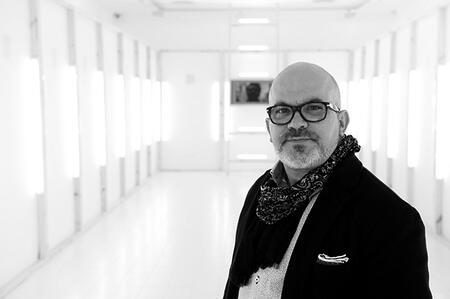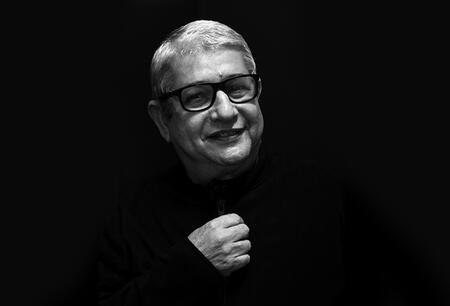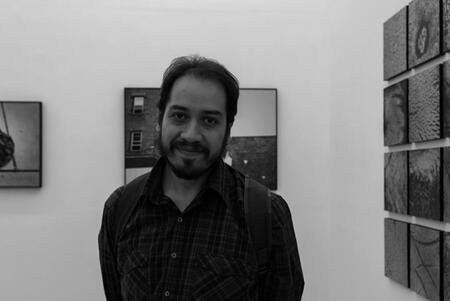With the curatorship of Omar-Pascual Castillo, Mario Gioia and José Antonio Navarrete Pinta Miami's Main Section presents an international selection of galleries in which varied contemporary axis converge and which share an important common gene: Ibero American culture.
Untangling the skein, clearing the gaze, opening spaces for coexistence, commercial relations and aesthetic research, and arguing various curatorial threads that investigate contemporary artistic practice and its precedents on both sides of the Atlantic, is what Pinta intends to show in this edition Miami 2022. As of today, the fair in the city with a broader curatorial team to guarantee open-mindedness, diversity, plurality and the highest artistic quality.
These curatorial threads approach how the art of Ibero-America is related to the abstract, post-concrete, post-opart, post-kinetic legacy; how the paths of the survival efforts of the narrative language in painting beyond the photographic where the neo-baroque marks us, differentiates us from the boring frontality of realism and opens up other symbolic paths, a reflection of our storytelling capacity; another linked to the stories of creative women who impose a matriarchal and feminist gaze towards a present time in constant crisis; another towards the deployment of drawing as a visual linguistic device; and finally, another one that spins and stitches, closing the circle, approaching how on both sides of the Atlantic we have a very special relationship (we could say ancestral) with the textile and the manufactured, as if an urgent need to touch each other persisted between us.
Omar-Pascual Castillo
Omar-Pascual Castillo
Born in Havana, Cuba, 1971. In 1998 he moved to Granada, Spain. He currently lives in Las Palmas, Gran Canaria, Canary Islands. Spanish citizen since 2016.
Degree in Education with a specialization in History and Philosophy. Thesis: Aesthetics of the Visual Arts (Estética de las Artes Visuales, 1994). Post-graduate studies in Aesthetics and Critical Theory at the Art Institute of Havana (1994-1996), and Conservation and Museum Management and Universidad Europea Miguel de Cervantes, Valladolid, Spain (2018).
In 1993 he was honored with a mention for the poetry prize Luis Rogelio Nogueras Ciudad San Cristóbal de La Habana for Los Arcanos del Eco. In 1994 he won the prize with Himnos de Ultramar (Poemas-Jazz), and in 1995 he won the Joven Mangle Rojo National Poetry Prize for Candor del Extravío. In 1995 he won the National Prize (AHS, Havana, Cuba) for Palimpsestos Neo-Barrocos (1995–1998), and in 2003 he won the New York-based Cuban Artist’s Fund (CAF) scholarship for his book Hijos de la Marea (Arte Cubano en el Exilio).
He has curated over one hundred exhibitions including José Bedia: Estremecimientos (2004), Barroco y Neobarroco, Ray Smith Deux Machine (2006), Tony Ousrler Mirada pensante (2008), ON PAINTING (2013), and Raúl Cordero Slow art for fast crowds (2022), among many others.
Director of the Atlantic Center of Modern Art (CAAM), Las Palmas, Gran Canaria, Canary Islands, Spain (2010-2015), and Director of Nova Invaliden Galerie, Berlin, Germany (2016-2017). Director of the curatorial studies seminar lpgc (2020) and of the 1st LPGC Contemporary Art Encounters, The Taken City (2021) co-curated with Dalia de la Rosa, Suset Sánchez and Octavio Zaya, Las Palmas de Gran Canaria, Spain.
The list of monographs he has edited includes Jorge Galindo, Elixir (2005), Turner, Madrid, Ray Smith (2006), Polígrafa, Barcelona, José Bedia. Obra, 1978–2006 (2007), Tony Oursler: Thinking Gaze (Mirada Pensante )(2008), Raúl Cordero (2010), Ron Gorchov. Donde se oculta el alma (2011) Turner, Madrid, Spain. Jesús Zurita un extraño ser (2019), GEGalería - ArtReport Editions, Monterrey, Mexico.
In 1996, he published Himnos de Ultramar (Poemas-Jazz), Ediciones Extramuros, Havana, Cuba and in 2013 La estela del samurái [una poética], Editorial Dardo, Santiago de Compostela, The publishing houses Hurón Azul published its compilation The Atlantic Experience and Ediciones El Drago published its vibrato collection of poems (2020) Madrid, Spain.
He has published more than two hundred texts in specialized art editions, such as the magazines: Atlántica, art.es, Dardo, Sublime Magazine and ArtNexus.
Omar-Pascual Castillo currently works as an editor and freelance curator.
_____
Photo by Alfredo Gugig
José Antonio Navarrete es un curador e investigador independiente de cultura y artes visuales. Ha colaborado con textos en numerosas revistas, catálogos, publicaciones académicas y periódicos. Una parte importante de su producción investigativa ha sido recogida en libros de su autoría y antologías colectivas. Su libro Fotografiando en América Latina: Ensayos de crítica histórica, publicado en Caracas en 2009, tuvo una segunda edición corregida y aumentada por Eds. Centro de Fotografía, de Montevideo, en 2017. Entre sus publicaciones recientes también se encuentran: Escribiendo sobre fotografía en América Latina. Antología de textos 1925-1970 (Montevideo: Eds. Centro de Fotografía, 2018). Dos ensayos de su autoría fueron incluidos en la antología Lenguaje sucio. Narraciones críticas sobre el arte cubano (Madrid: Editorial Hypermedia, 2019). Otros dos fueron incorporados a Estudios Críticos sobre Fotografía Cubana (La Habana: Ediciones Universidad de la Habana, 2020). Su ensayo "Alejandro C. Del Conte: un protagonista en la red olvidada del fotoclubismo latinoamericano" formó parte de Alejandro C. Del Conte: Memorias de un soñador (Buenos Aires: CIHFA, 2021). Fue co-autor de Foto-Cine Clube Bandeirante: Itinerários Globais, Estéticas em Transformação (São Paulo: Galería Almeida e Dale, 2022).
Ha participado como ponente en numerosos simposios y congresos internacionales, entre ellos: Encuentros, Utopía y Experimentación: De la Tenochtitlan precolombina a la Buenos Aires contemporánea (Getty Center, LA, noviembre, 2017); Jornadas12: Fotografía Latinoamericana. Confluencias y Derivaciones (Centro de Fotografía, Montevideo, septiembre, 2018); Cuban Photography: La Isla en su imagen durante dos siglos (Centro Cultural Cubano, Nueva York, octubre, 2018); Congreso de historia de la fotografía Esto ha sido (Centro de Fotografía, Montevideo, mayo, 2019); Ecuador Foto-fest (Universidad del Azuay, Cuenca, 2022).
Entre sus curadurías recientes se cuenta: Remaking Miami: Josefina Tarafa's Photographs of the 1970s (Cuban Legacy Gallery, Miami Dade College Special Collections, Miami, 2020). Desde 2012 hasta el presente desarrolla el programa curatorial de ArtMedia Gallery, en Miami. Actualmente colabora en dos proyectos de libros: Alfredo Boulton: Looking at Venezuela (1928-1978), del Getty Research Institute, LA, y en Photographie-Monde. Histoires des débuts (1842-1911), editado por Actes du Sud y el Musée du Quai Branly, Paris.
Fue curador de la Sección de Fotografía de PINTA, Miami, durante los tres años en que ésta se organizó, entre 2015-2017, y regresa junto con ella al evento en el presente año, también encargado de su curaduría.
_______
Mario Gioia (São Paulo, 1974)
Independent curator and art critic, graduated from ECA-USP (School of Communications and Arts in the University of São Paulo). In 2018, he signed the curatorial section dedicated to Brazil at Pinta fair (Miami, USA). In the ArtLima Fair 2017 (Peru), he signed as the curator for the special section CAP Brazil, titled Sul-Sur, and wrote the critical text for Territórios Forjados (Sketch Gallery, 2016), in Bogotá (Colombia). Gioia was an invited critic from 2013 to 2015 for the Exhibitions Program at CCSP (Centro Cultural São Paulo), and in the same institution was a part of the group of critics of the Photography Program 2012. In 2015, he was the curator of Ter lugar para ser at CCSP, a collective exhibition with 12 artists about the relation between architecture and the visual arts. From 2011, was part of a group of critics from Paço das Artes, institution in which he performed critical mentoring for the projects Luz Vermelha (2015) by Fabio Flaks, Black Market (2012) by Paulo Almeida, and A Riscar (2011) by Daniela Seixas. In 2019 started the project Perímetros at the Adelina Instituto, in São Paulo, dedicated to artists who had not had solo exhibitions in the city, which carried out exhibitions by João Trevisan (DF), Lara Viana (BA), Claudia Hamerski (RS), Dirnei Prates (RS) and Larissa Camnev (Campinas, SP).


